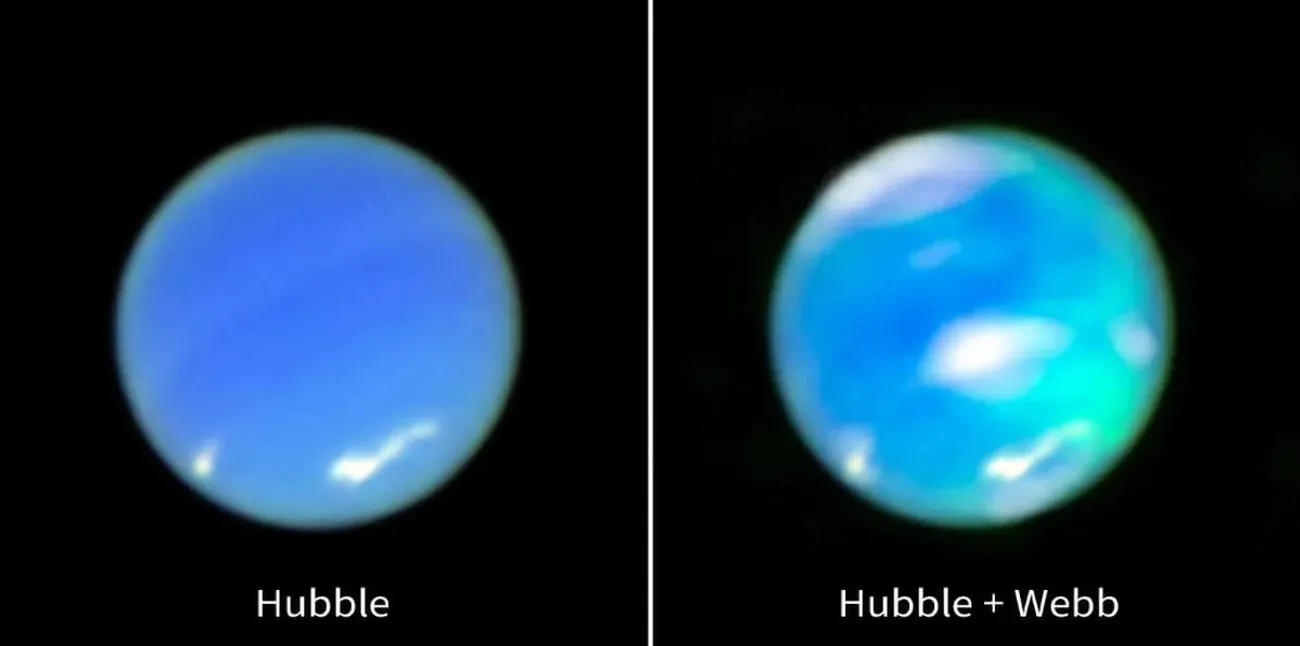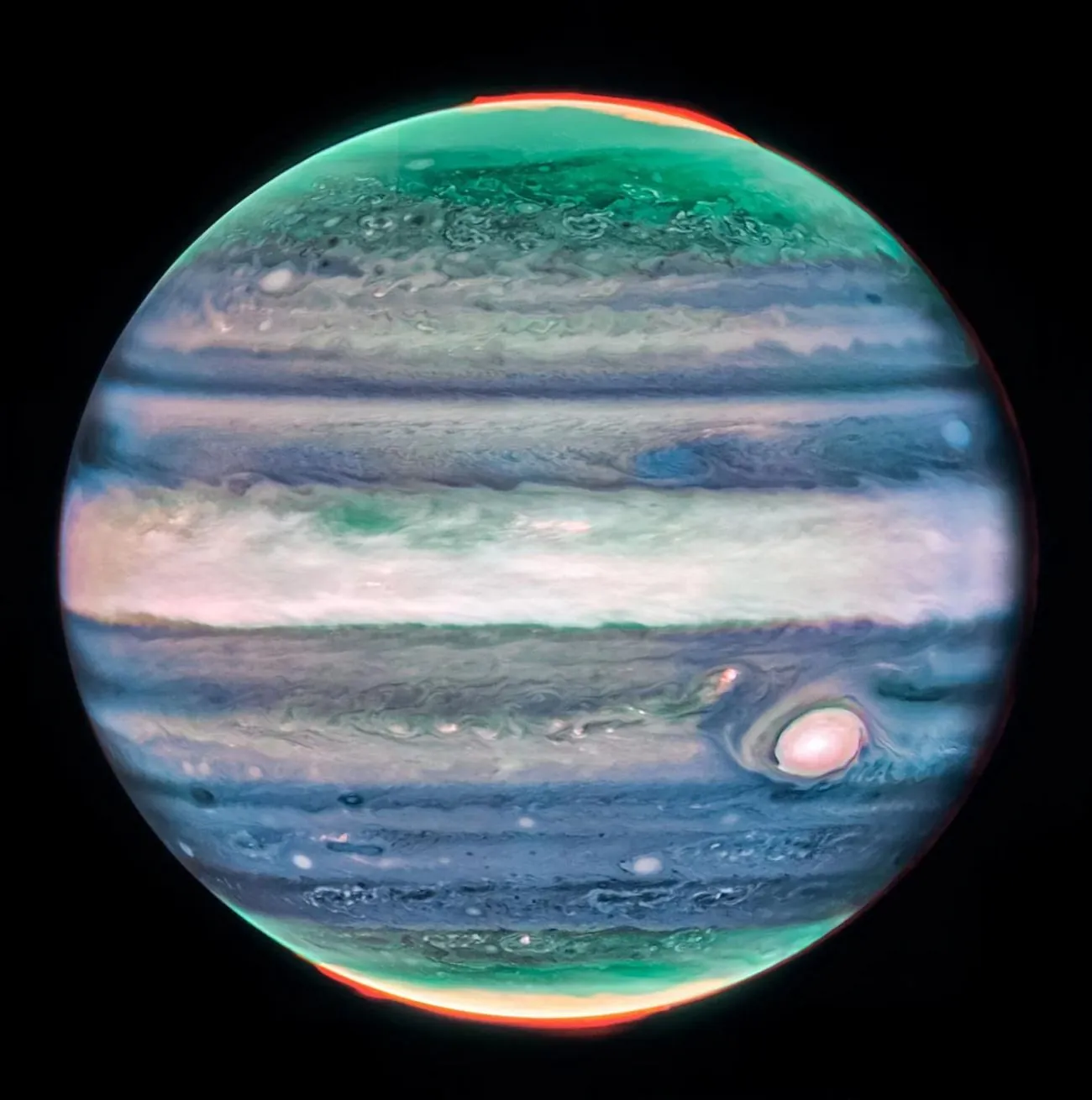Webb telescope for the first time captured Neptune's auroras in detail
Kyiv • UNN
The Webb telescope has for the first time been able to capture Neptune's auroras in stunning infrared detail. The auroral activity is located at the planet's mid-latitudes, not at the poles.

Neptune lies at the outermost edge of our Solar System, almost 5 billion km from the Sun. Since 1989, the planet has been remotely observed by the Hubble telescopes, but new equipment has helped astronomers capture Neptune's auroras in stunning detail. This is reported by UNN with reference to Scitechdaily.
Details
It is noted that only one spacecraft flew past Neptune in 1989. This was NASA's Voyager 2. Since then, the planet has been remotely observed by telescopes such as Hubble, which tracked Neptune's dynamic weather and even discovered a new moon in 2013.
On Neptune, often seen as a calm blue sphere, dark spots occasionally appeared and quickly disappeared. But now, NASA's James Webb Space Telescope has discovered something entirely new: a brilliant aurora shimmering in the planet's atmosphere. It was captured for the first time in stunning infrared detail.
Auroras form when a planet's magnetic field traps high-energy particles, primarily from the Sun. They collide with its upper atmosphere, creating a bright light.
Astronomers had previously seen hints of auroral activity on Neptune, including during the Voyager 2 flyby. But, unlike Jupiter, Saturn, and Uranus, there was no confirmation or images of auroras on Neptune. This made it the last of the giant planets without direct evidence of this phenomenon.
First images of auroras on Neptune
The first images of auroras on Neptune were obtained in June 2023 using Webb's Near-Infrared Spectrograph.
It turned out that a real image of Neptune's auroras was only possible with Webb's near-infrared sensitivity. It was so stunning not just to see the auroras, but the detail and clarity truly shocked me.

Features of auroras on the ice giant
The auroral activity seen on Neptune is noticeably different from what we are used to seeing here on Earth, Jupiter, or Saturn. Instead of being confined to the planet's north and south poles, Neptune's auroras are located at the planet's mid-latitudes - roughly where South America is located on Earth. This is due to the nature of the planet's magnetic field, which is tilted 47 degrees from the planet's rotational axis. Since auroral activity is based where magnetic fields converge into the planet's atmosphere, Neptune's auroras are located far from its rotational poles.
The innovative detection of Neptune's auroras will help us understand how Neptune's magnetic field interacts with particles flowing from the Sun to the distant corners of our Solar System, providing an entirely new window into the atmospheric science of ice giants.

Why Neptune's auroras were hidden for so long
Thanks to Webb's observations, the team also measured the temperature of Neptune's upper atmosphere for the first time since the Voyager 2 flyby. They have cooled by several hundred degrees since 1989.

For many years, astronomers predicted the intensity of Neptune's auroras based on the temperature recorded by Voyager 2. A significantly lower temperature leads to much weaker auroras. It is likely that the low temperature is the reason why Neptune's auroras remained unnoticed for so long.
The American device took stunning pictures of the sunset from the Moon19.03.25, 06:19 • 20016 views